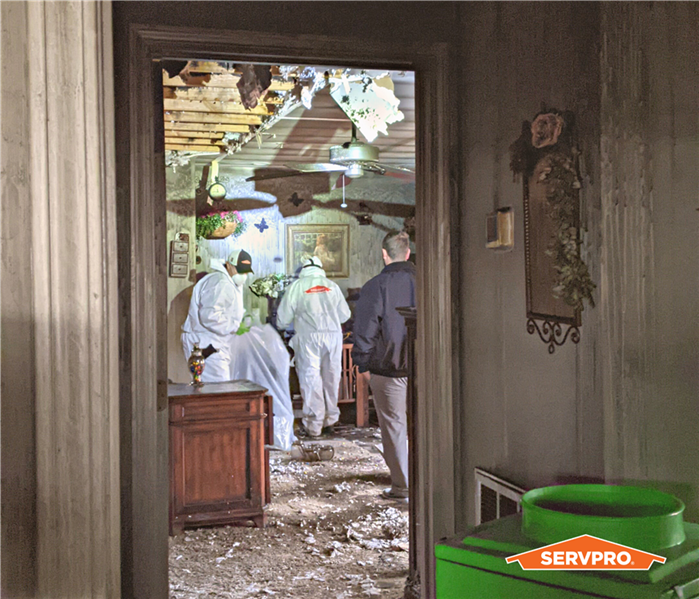Dry Techniques for Cleaning Fire Damaged Home
3/20/2022 (Permalink)
 Our experienced and trained SERVPRO team knows that mitigating fire damage includes a variety of replacing, restoring, and cleaning techniques.
Our experienced and trained SERVPRO team knows that mitigating fire damage includes a variety of replacing, restoring, and cleaning techniques.
Fire Damage Cleanup Restored Using Dry Cleaning Methods
When our SERVPRO technicians work with hard surfaces, we can use water based-detergents and other wet cleaning methods.
For porous surfaces, wet techniques could cause the soot to soak deeper into the material. Dry cleaning methods that use agitation can prove useful in these cases.
Heat can burn flammable materials inside a structure, forcing removal and replacement of those materials, but the smoke coming from the blaze can also cause soils, soot residues, and intense aromas.
4 Types of Smoke and Soils
A professional will know to use different chemicals and techniques when removing residues left behind, based on the smoke type. In most situations, smoke and the soils it leaves behind can be classified into one of four categories of smoke and soot damage: wet, dry, protein residue, and fuel oil soot. Knowing what type of smoke was present helps the technician pick the best method to remove soot residues on the various surfaces of your building materials and contents.
Dry Techniques for Cleaning Fire Damaged Home
Various fire residues adhere to each surface in your home differently, and we can help with it all. Some of the most effective techniques are dry techniques. Dry techniques are not suited to all material types, but they work well on materials that might otherwise be damaged from a more intense cleaning process.
Light Agitation
SERVPRO of East Arlington conducts the dry cleaning agitation technique with softer tools such as dusters or brushes. Special vacuums are also useful when removing some soot residues and using compressed air to blow off the soot. Light agitation is used for delicate or lightly soiled items that don’t require further scrubbing.
Medium Agitation
Residues that adhere to some of your contents and building surface materials could work better in medium agitation cleaning techniques. Dry sponges are an example of a medium agitation method, and they can be useful when removing soot residues from drywall. Dusting cloths or crumbling cleaners that work like a pencil eraser are also useful.
It's What We Do
Our experienced and trained SERVPRO team knows that mitigating fire damage includes a variety of replacing, restoring, and cleaning techniques. When mitigating smoke-related problems inside your home, it is invaluable to have the necessary knowledge. For professional assistance after a fire, call SERVPRO of East Arlington at (682) 708-1001, 24/7. We're Faster to Any Size Disaster®.




 24/7 Emergency Service
24/7 Emergency Service